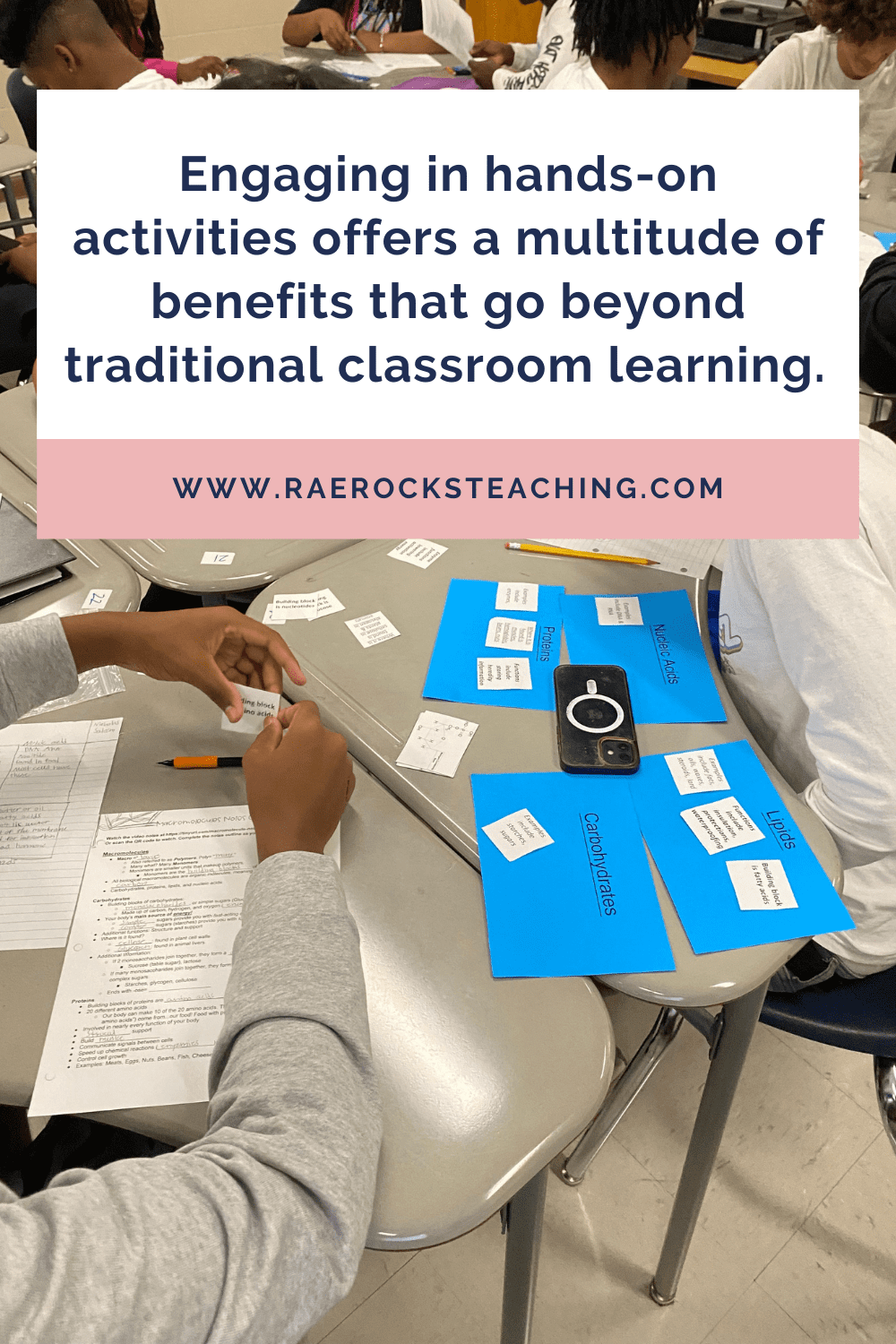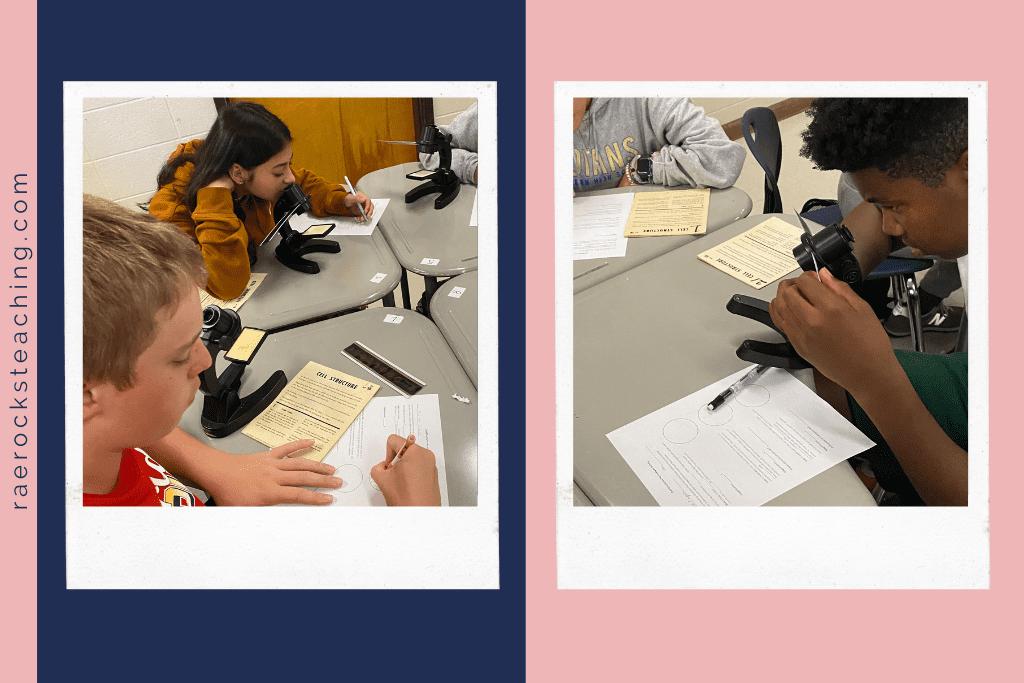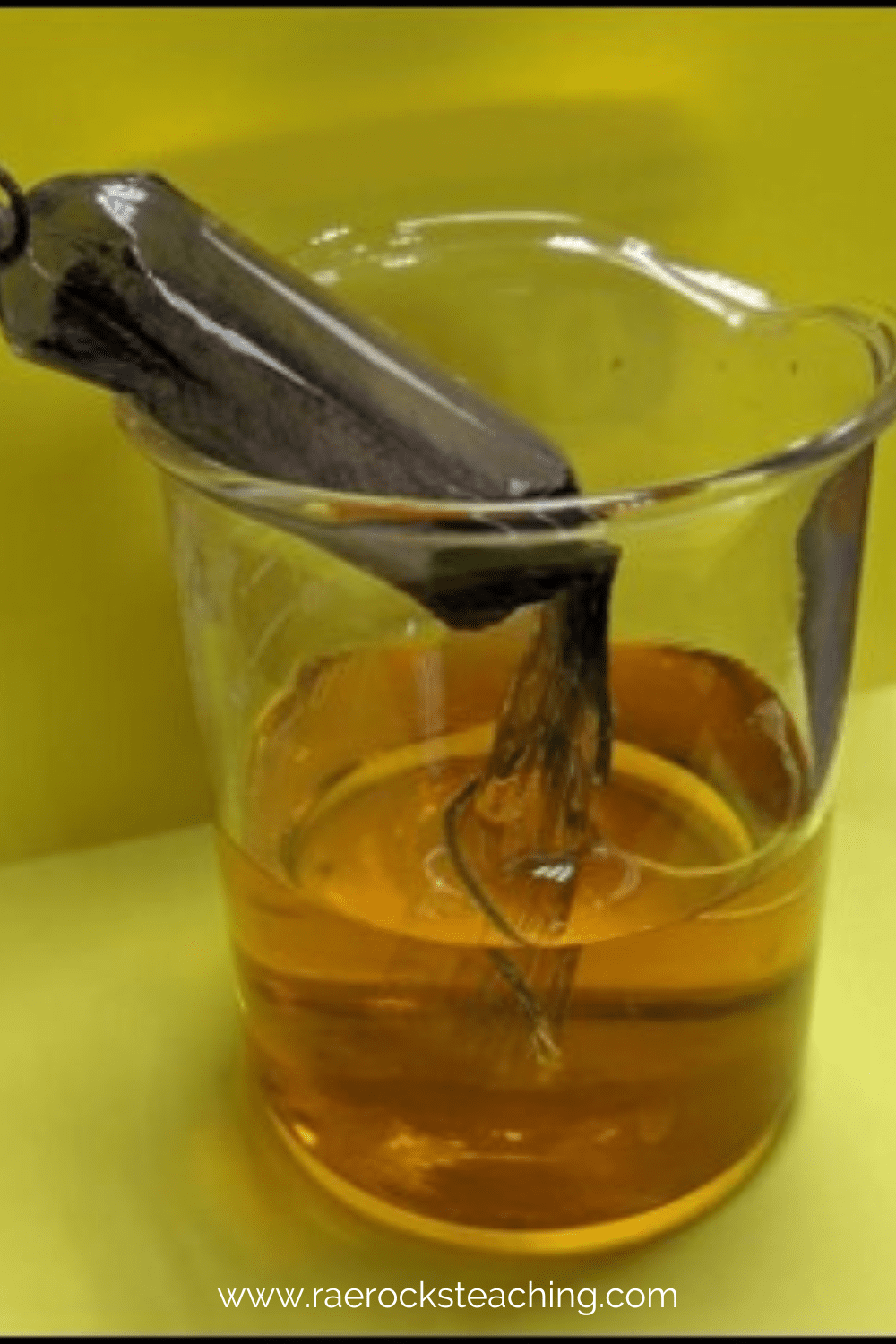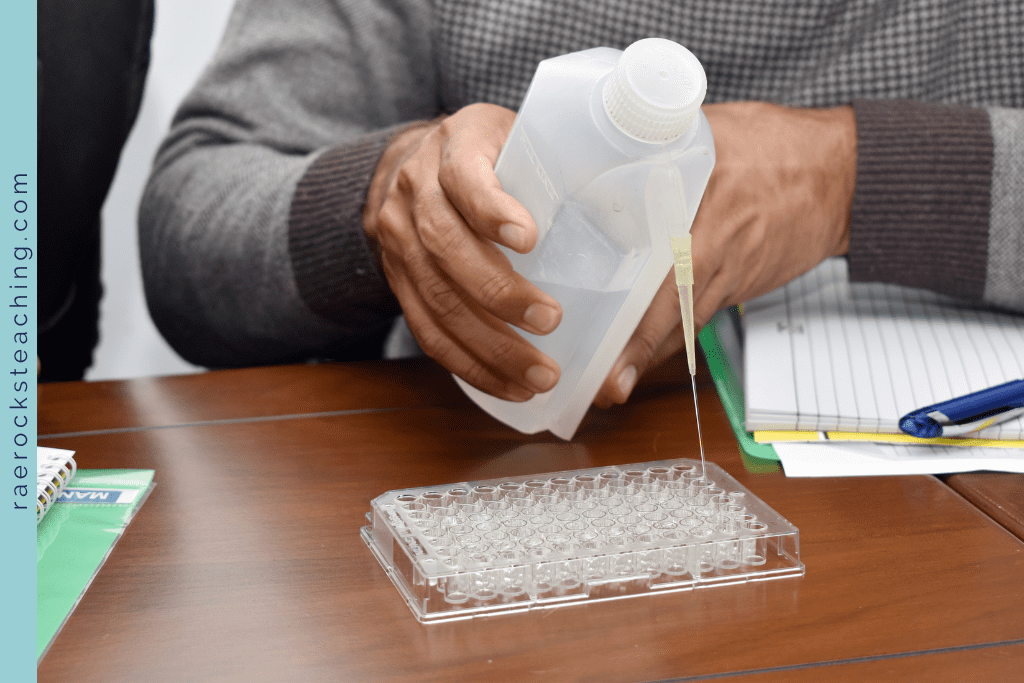Hello, fellow biology teacher friends! As a veteran biology teacher, I understand that easy hands-on activities can be the key to unlocking a deeper understanding of complex concepts. So, put on your lab coats and join me as we explore 5 engaging hands-on activities that will bring the magic of biology to life!
But first…Are you looking for different ways to engage your Biology students? Then grab your FREE COPY of the ULTIMATE ENGAGEMENT GUIDE!
The Benefits of Hands-On Activities in the Classroom
Engaging in hands-on activities offers a multitude of benefits that go beyond traditional classroom learning. Let’s take a closer look at how these activities enrich the educational experience:
- Active Engagement: Hands-on activities encourage active participation and involvement, making learning more enjoyable. Students become active learners rather than passive listeners.
- Concrete Understanding: Complex concepts become more tangible through hands-on experiences. Activities provide a concrete way for students to interact with abstract ideas, leading to better comprehension and retention.
- Critical Thinking: Hands-on activities stimulate critical thinking skills as students analyze observations, make connections, and draw conclusions.
- Covers Multiple Learning Styles: Students have diverse learning styles – visual, auditory, kinesthetic, etc. Hands-on activities cater to various learning preferences, ensuring that every student has an opportunity to excel.
- Sticks in Memory: Activities that involve sensory experiences tend to create lasting memories. Students remember the excitement of the experiment and the outcomes, making the knowledge stick.
- Collaborative Learning: Many hands-on activities are collaborative in nature. Students work together, share insights, and build communication skills, creating a positive classroom environment.
- Curiosity and Interest: Interactive experiences spark curiosity and interest in the subject matter. Students become motivated to explore further and ask questions, driving their own learning journey.
- Real-World Application: Hands-on activities bridge the gap between theoretical concepts and real-world applications. Students can see how principles are applied in practical scenarios.

-
Save
Hands-On Activities For Biology
- Properties of Water Stations: Unraveling the Secrets of H2O
Water is the unsung hero of life, and its unique properties never fail to amaze. With the Properties of Water Stations activity, you’ll create a series of interactive stations to dive into the wonders of this essential molecule. Prepare a variety of stations, each focusing on different properties of water.

-
Save
Setting up the stations:
- Cohesion and Adhesion: Provide small bowls of water and various materials like paperclips, cotton swabs, and small pieces of paper. Let participants explore how water molecules stick to each other (cohesion) and other surfaces (adhesion).
- Surface Tension: Place a small paperclip or coin on the surface of a bowl of water and observe how the water’s surface tension allows the object to float.
- Capillary Action: Fill small tubes with water and place them in colored water. Watch as the water climbs against gravity due to capillary action.
- Density Anomalies: Set up a tank with ice water and another with room temperature water. Drop small objects like paper squares and grapes into each tank and observe how they behave differently due to water’s density changes.
Encourage participants to move through the stations, interact, and discuss their observations to grasp the remarkable properties of water.
- Cell Membrane Bubble Lab: Bubbling Up Cellular Insights
Cells are the building blocks of life, and their membranes play a crucial role in maintaining their structure and function. This fun Cell Membrane Bubble Lab will help students visualize the selective permeability of cell membranes using soap bubbles.

-
Save
There are several FREE versions of this on the internet for you to find. This hands-on experiment provides a playful yet insightful way to understand how cell membranes control the movement of substances in and out of cells.
- Microviewers: Journey into the Microscopic Realm
Exploring structures under microviewers is great for students to see objects up close If your school has access to microviewers, I highly suggest you having students take time to investigate all of the various microviewer slide sets that relate to your content. I do this with at least 3-5 units in Biology.

-
Save
- Cell Transport Lab with Dialysis Tubing: Crossing Membranes, Literally
Cell transport mechanisms can be quite the puzzle to understand. The Cell Transport Lab with Dialysis Tubing lets students visualize how substances move across cell membranes using a semi-permeable model.

-
Save
Setting up the lab:
- Obtain dialysis tubing and soak it in water to make it pliable.
- Tie one end of the tubing to create a sealed “cell.”
- Fill the tubing with a solution of starch and water. This will represent the cell’s interior.
- Place the sealed tubing in a beaker of iodine solution. Iodine can pass through the tubing, simulating transport.
- Observe how the iodine diffuses into the tubing, indicating movement through the “cell membrane.”
Through this hands-on experiment, participants can witness how certain molecules move across a cell membrane via diffusion.
- Extracting Strawberry DNA: Unraveling the Genetic Code
DNA is the ultimate information repository in living organisms. The Extracting Strawberry DNA activity offers a tangible way to visualize and understand DNA extraction.

-
Save
Getting hands-on:
- Mash a ripe strawberry in a plastic bag to break down its cellular structure.
- Mix a solution of dish soap, salt, and water. This breaks down the cell and nuclear membranes, releasing the DNA.
- Add the solution to the mashed strawberry and gently mix.
- Strain the mixture through a fine mesh to collect the liquid (containing DNA).
- Pour the liquid into a test tube or small glass and add cold rubbing alcohol. DNA will precipitate and become visible as a white, stringy mass.
Again, this activity you can find FREE versions of on the internet as well with a simple google search. This captivating activity provides a chance to see and even touch the very essence of life – DNA.
As we wrap up our exploration of these exciting hands-on biology activities, one thing becomes abundantly clear: learning comes alive when we roll up our sleeves and dive into the world of experimentation. The benefits of hands-on activities extend far beyond the classroom, nurturing a deep appreciation for the intricacies of biology while cultivating critical thinking, collaboration, and a thirst for discovery.
Happy experimenting!
I love sharing with y’all and would love to connect on IG or Facebook. Don’t forget to snag the 15 Activities for Biology to Increase Engagement FREEBIE!

-
Save
I love sharing helpful content with y’all and would love to connect on IG or Facebook. I’m on TikTok too! Follow me and send me a DM with what you need more of because I’m here to help! If you are looking for even more inspiration, find me on Pinterest!
Wanna read more?
Biochemistry and Biology Doesn’t Have to Suck: Try These Fun Activities Instead
3 Unique Ideas for Biology Projects to Ramp Up Your Students Creativity
5 Classroom Organization Examples to Help High School Teachers Stay on Top of their Game
Share via:









One Response